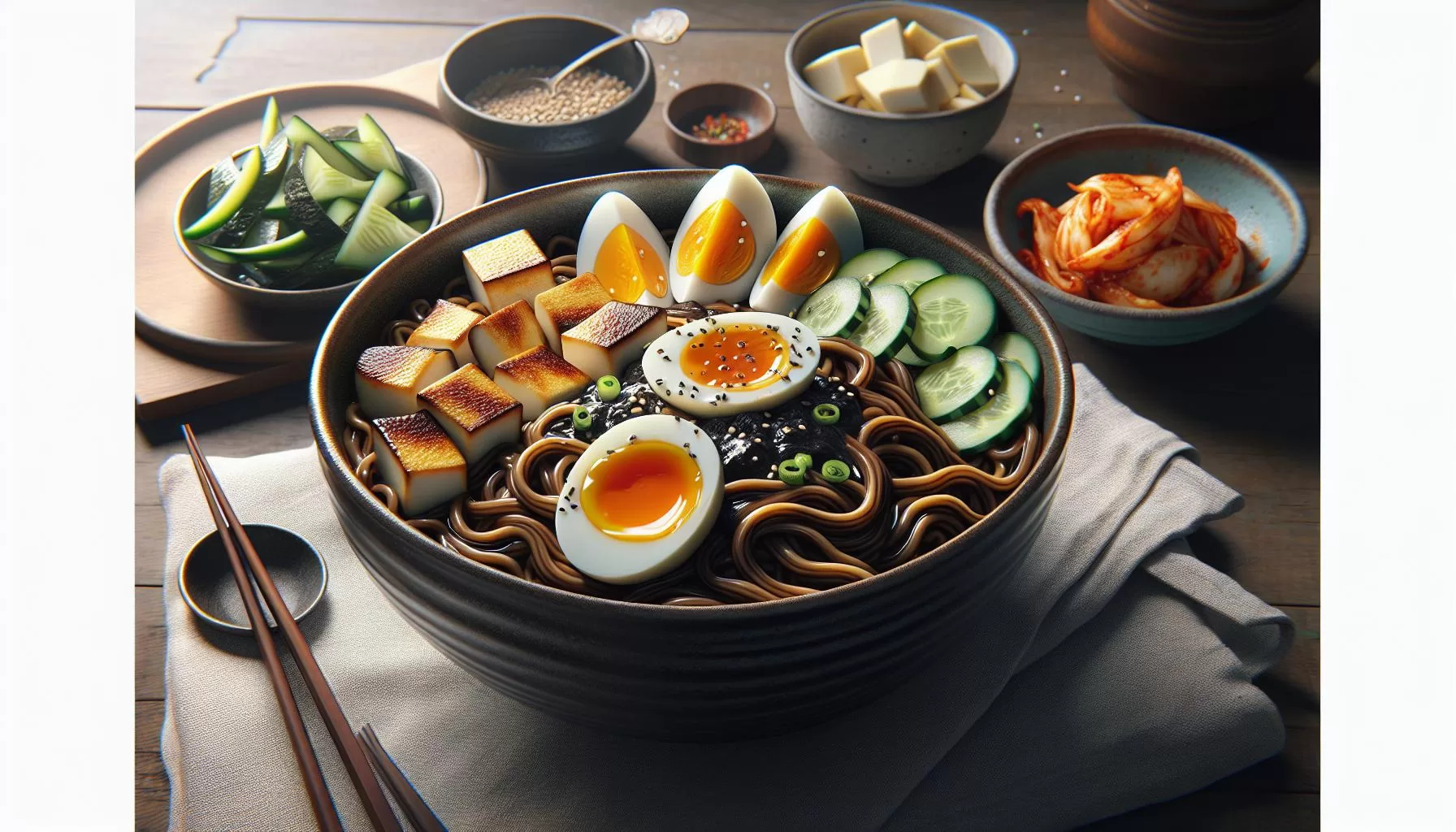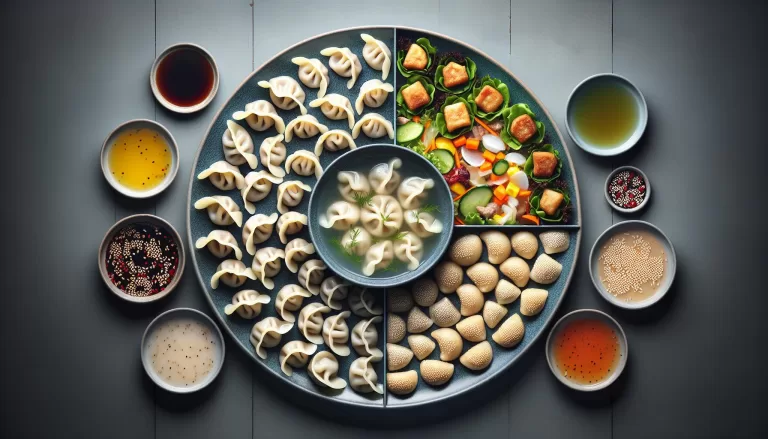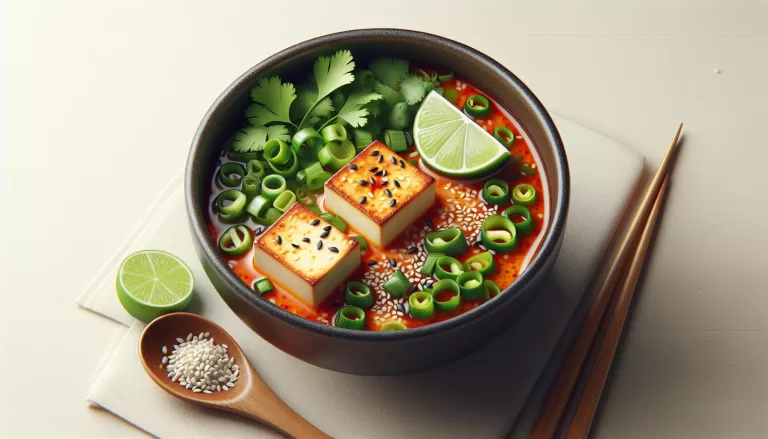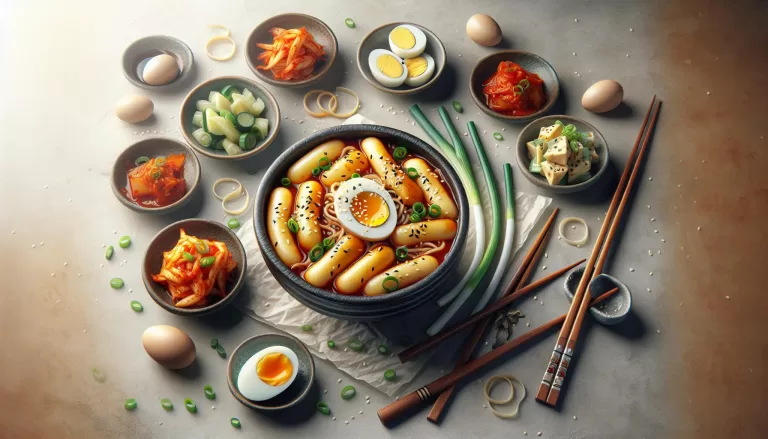Authentic Homemade Jajangmyeon Noodles Recipe and Unique Garnishing Ideas

Choosing the right ingredients
To nail this homemade Jajangmyeon noodles in black bean sauce recipe, the selection of quality ingredients is everything. The right ingredients not only enhance the flavor but also determine the overall success of this Korean-Chinese culinary delight.
Your kitchen needs noodles, they’re the backbone of any Jajangmyeon dish. Go for thick wheat noodles. Their sturdiness makes them perfect for carrying the hefty, robust sauce.
Next on the list, black bean sauce. Also known as chunjang, it’s the soul of Jajangmyeon. An intense, richly-flavored paste made from roasted soybeans. It’s available in Asian markets or online. Firmly, a non-negotiable ingredient!
Don’t forget pork belly. It’s fatty, tender, and gives the sauce a juicy meat flavor. If you prefer a leaner meat, substitute with chicken or beef.
Let’s talk vegetables. Typically, the dish includes diced onions, cabbage, and zucchini, but don’t hesitate to toss in extra vegetables for added nutrition or your preferred taste.
For an unexpected kick, consider adding oyster sauce. It’s non-traditional but can enhance the depth of flavor in your sauce—complimenting the savory black bean paste remarkably.
Here’s a quick ingredient list to aid your shopping:
| Ingredients | Quantity |
|---|---|
| Thick wheat noodles | 500 grams |
| Black bean sauce (chunjang) | 1/2 cup |
| Pork belly (can substitute with chicken or beef) | 300 grams |
| Diced onions | 1 cup |
| Diced cabbage | 1 cup |
| Diced zucchini | 1 cup |
| Oyster sauce | 2 tablespoons |
Remember, the better the ingredients, the more fantastic the dish. Don’t hesitate to experiment and tailor the dish to suit your palate! There’s room for creativity even within traditional recipes. Armed with these tips, it’s time to gear up and make your homemade Jajangmyeon, a culinary masterpiece.
Making the homemade noodles from scratch

You’ll love the added authenticity and flavor that comes with homemade noodles. So, let’s dive into the process.
Start by gathering everything up-front. You’ll need the following:
| Ingredients | Quantity |
|---|---|
| All purpose flour | 2 cups |
| Salt | 1 teaspoon |
| Eggs | 2 |
| Water | Approximately 1/2 cup |
Pour your all-purpose flour into a large mixing bowl. Add your salt and make a well in the center. Into this, crack your eggs. Now it’s time to get hands-on! Begin combining the ingredients.
The exact amount of water you’ll need can vary. Start with a small amount. Begin by adding about 1/4 cup of your water. Mix it in well by hand. Add more as necessary – you’re aiming for a dough that’s firm yet pliable.
Next, we’ll let the dough rest. This step really contributes to the final texture of your noodles. Wrap your dough in plastic wrap and let it sit at room temperature for at least 30 minutes. During this time, gluten will develop in your dough giving your homemade noodles a beautiful bite.
Now for the fun part! Following the resting period, it’s time to roll out your dough. Thick or thin, it’s entirely up to your preference. It’s these personal touches that make homemade jajangmyeon a special experience.
Finally, cut your flattened dough into individual strips, ready for cooking.
Your homemade noodles will add a charming touch to your jajangmyeon dish. Not to mention, the improved texture and heartiness really boost the overall eating experience. Plus, the process gives you total control over the ingredients. It’s perfect for those seeking a healthier alternative with lower sodium levels and no preservatives.
By selecting sturdy ingredients, developing your dough thoroughly, and cooking it to perfection, you’ll craft a fresh and appealing dish.
Crafting the authentic black bean sauce

Now that you’ve mastered the art of making homemade jajangmyeon noodles, it’s time to add soul to your dish with authentic black bean sauce. Take comfort knowing that by making your own, you control the flavor and consequently unleash the full potential of the dish.
Start by gathering your ingredients. Always remember, the sauce is more than just black bean paste – it’s a symphony of flavors.
To craft the sauce, you’ll require:
- Black bean paste (3 tablespoons)
- Pork belly, diced (150grams)
- Onions, diced (2 large sizes)
- Zucchini, diced (1 medium size)
- Potatoes, diced (1 large size)
- Sugar (1 tablespoon)
- Oyster sauce (1 tablespoon)
- Cooking Wine (1 tablespoon)
- Cornstarch diluted in water (1 tablespoon)
- Water (2 cups)
Begin by sautéing the pork belly in a pan till it’s slightly brown and then add your black bean paste. Stir-fry the mixture until the aromas seep out. This careful process brings out the flavors beautifully.
Next, add in your diced veggies and continue stir-frying till they are coated well with the paste. Pour in your water and bring it to a simmer. To thicken the sauce, add your cornstarch solution and stir it well to avoid lumps.
Your black bean sauce is coming together, right? Well, here’s an insider tip; adding sugar and oyster sauce can significantly elevate your sauce’s flavor profile, culminating in a savory, umami-packed experience. Also, a dash of cooking wine neutralizes unwanted porkiness.
As an optional twist, try adding diced mushrooms for a delectable earthy undertone, or even shrimp for a delightful burst of seafood flavor.
| Ingredients | Amount |
|---|---|
| Black bean paste | 3 tbsp |
| Diced pork belly | 150 g |
| Diced onions | 2 large |
| Diced zucchini | 1 medium |
| Diced potatoes | 1 large |
| Sugar | 1 tbsp |
| Oyster sauce | 1 tbsp |
| Cooking Wine | 1 tbsp |
| Cornstarch in water | 1 tbsp |
| Water | 2 cups |
Cooking the jajangmyeon noodles and sauce together

After crafting your homemade black bean sauce, the next crucial step is combining the sauce and noodles together. This is where your Jajangmyeon transforms from separate elements into one cohesive, tasty dish.
First off, prepare your preferred brand of noodles. It could be thick wheat noodles, or even spaghetti if you’re in a pinch. Cook them as per the instructions but take care not to overcook them. Soggy noodles won’t hold the sauce properly. Aim for al dente, firm but not too hard.
While your noodles are taking their hot bath, grab the pan with your home-crafted black bean sauce. Now, low heat is key here. Warm your sauce up, stirring it gently. To avoid your sauce from getting too thick, add a bit of the noodle’s cooking water if necessary.
Here comes the crucial part: Fusing the noodles and the sauce. Drain your noodles well, ensuring there’s no residual water. Then, transfer them into the pan of black bean sauce. Mix everything well, ensuring each strand gets a hearty coating of your flavorful sauce.
The final result? A delightful, hearty bowl of Jajangmyeon noodles, enriched with your homemade black bean sauce. Experiment with this step: try adding sauce first then noodles, or vice versa. See what works for you, and remember: every good cook puts their own spin on their dishes.
And for those interested in the nutritional numbers, here’s a quick breakdown:
| Ingredients | Calories | Carbs | Protein | Fat |
|---|---|---|---|---|
| Black Bean Sauce | 60 | 9g | 3g | 2g |
| Noodles | 220 | 42g | 7g | 1g |
| Pork Belly | 180 | 0g | 7g | 16g |
| Vegetables | 60 | 13g | 3g | 0g |
Feel adventurous? Use alternative ingredients: swap pork belly for tofu for a leaner option or introduce unconventional toppings like scrambled eggs or seafood for extra taste and protein!
Garnishing and serving your homemade jajangmyeon

Once your Jajangmyeon noodles and black bean sauce have combined into a flavorful union, it’s time to take it up a notch with garnishing and serving your creation. How you serve up your Jajangmyeon can often be the deciding factor in elevating an everyday dish to gourmet status. Let’s jump in, mold this journey according to your own rhythm, and pour your personality into the final touches.
A traditional garnish for Jajangmyeon begins with cucumbers. Slivered into fine julienne strips, their crisp crunch provides an irresistible contrast to the soft, flavorful noodles. Aim for about half a cucumber per serving.
Boiled or steamed eggs are also a popular choice. Slice them in half lengthwise for a charming visual and a creamy mouthfeel. You’ll need one egg per serving.
Explore the uncharted waters by adding tofu or kimchi to your garnish list. These aren’t traditional ingredients, but they might just add that unique kick you’ve been looking for. Make sure to adjust your serving sizes for your additional garnishes.
Here’s a quick view of your garnishing requirements:
| Ingredients | Per Serving |
|---|---|
| Cucumber | ½ |
| Boiled egg | 1 |
| Tofu (optional) | Adjust as per taste |
| Kimchi (optional) | Adjust as per taste |
And with the garnishing in place, you’re ready to serve. Place a portion of the noodles on a plate or in a bowl, and arrange your chosen garnishes on top.
Remember, there’s no wrong way to garnish or serve your Jajangmyeon. All that’s left to do now is to enjoy the fruits of your culinary adventures, and maybe, just maybe, you’ve discovered a new favorite dish in the process.
Conclusion
So there you have it! You’re now equipped with all you need to whip up a scrumptious homemade Jajangmyeon dish. Remember, it’s all about personalizing your bowl of noodles in black bean sauce. Whether you’re a fan of traditional garnishing like cucumbers and boiled eggs or you’re up for a little adventure with tofu and kimchi, the choice is yours. You’re not just preparing a dish, you’re creating an experience. So go ahead, mix things up and find your own unique version of this beloved Korean dish. After all, the beauty of homemade Jajangmyeon is in its flexibility and the joy of culinary discovery. Enjoy your kitchen journey and happy cooking!





